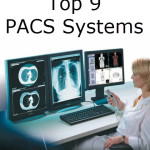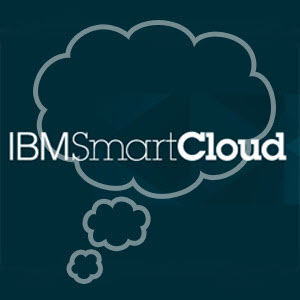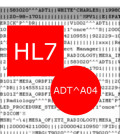Top 9 PACS Systems
Entries for the Top PACS Systems are far ahead of when I began working with Picture Archive Communications Systems back in the year 2000. At that time PACS was just  in its’ infancy and steadily evolving.
in its’ infancy and steadily evolving.
At one of my first PACS installations, we used a StorageTek 9710 Tape Library for long term archiving and had a 1 terabyte RAID for ‘on-line’ storage.
At that time it seemed like a huge amount of space. Although after all of the system ‘overhead’, there was only about 6oo gigabytes out of the 1 terabyte left.
There wasn’t a lot of resources out there either. A quick search on Amazon and I found lots of great resources as you can see below. You can even buy medical grade monitors on Amazon.
Nowadays tape libraries have been replaced by different tiers of spinning disk online storage. The terabytes of storage we used to discuss have changed to petabytes in some cases.
Especially when dealing with region systems.
In my service region we started implementing PACS at a research facility as a pilot project with a goal of having a regional PACS system spanning the entire province. Leveraging the success of that first implementation would lead to installing at additional hospitals.
As that first installation progressed, eventually the PACS data center was receiving ‘remote’ images from rural health centers. At the time it was an amazing accomplishment.
In Canada geography is a huge challenge and obstacle. There are many patients who live in rural areas or distant cites that lack the required health care providers in their immediate area. Many rural patients are hundreds of miles away from health centers with the required health care providers.
It’s also challenging for physicians and radiologists to travel in a timely manner as well to service those patents. In the year 2000 to have the ability for radiologists to view images for a patient that was hundreds of miles away only minutes after acquiring CTs, X-rays or Ultrasounds was a life saver.
Fast forward to 2012 and the landscape has changed considerably. There are many more vendors involved in PACS, the architecture has changed considerably including cloud computing, integration with dictation systems, huge increases in storage requirements and now PACS service extends beyond the radiology department.
Although technology prices have dropped considerably, PACS still requires a significant capital expense. In order for organizations to leverage the costs and infrastructure of PACS the ‘enterprise’ as a whole needs to be considered. This includes added integration capabilities for documents, images and electronic health records.
When dealing with images in healthcare the DICOM protocol is the universal standard for image transfer, so that’s obviously a requirement for the PACS environment. In addition to DICOM, there are a few additional requirements expected when dealing with enterprise healthcare.
- Hardware agnostic
- HL7 compatible
- Having an API (Application Programming Interface)
- XDS capable (cross enterprise document sharing)
- Migration capabilities












You must be logged in to post a comment Login